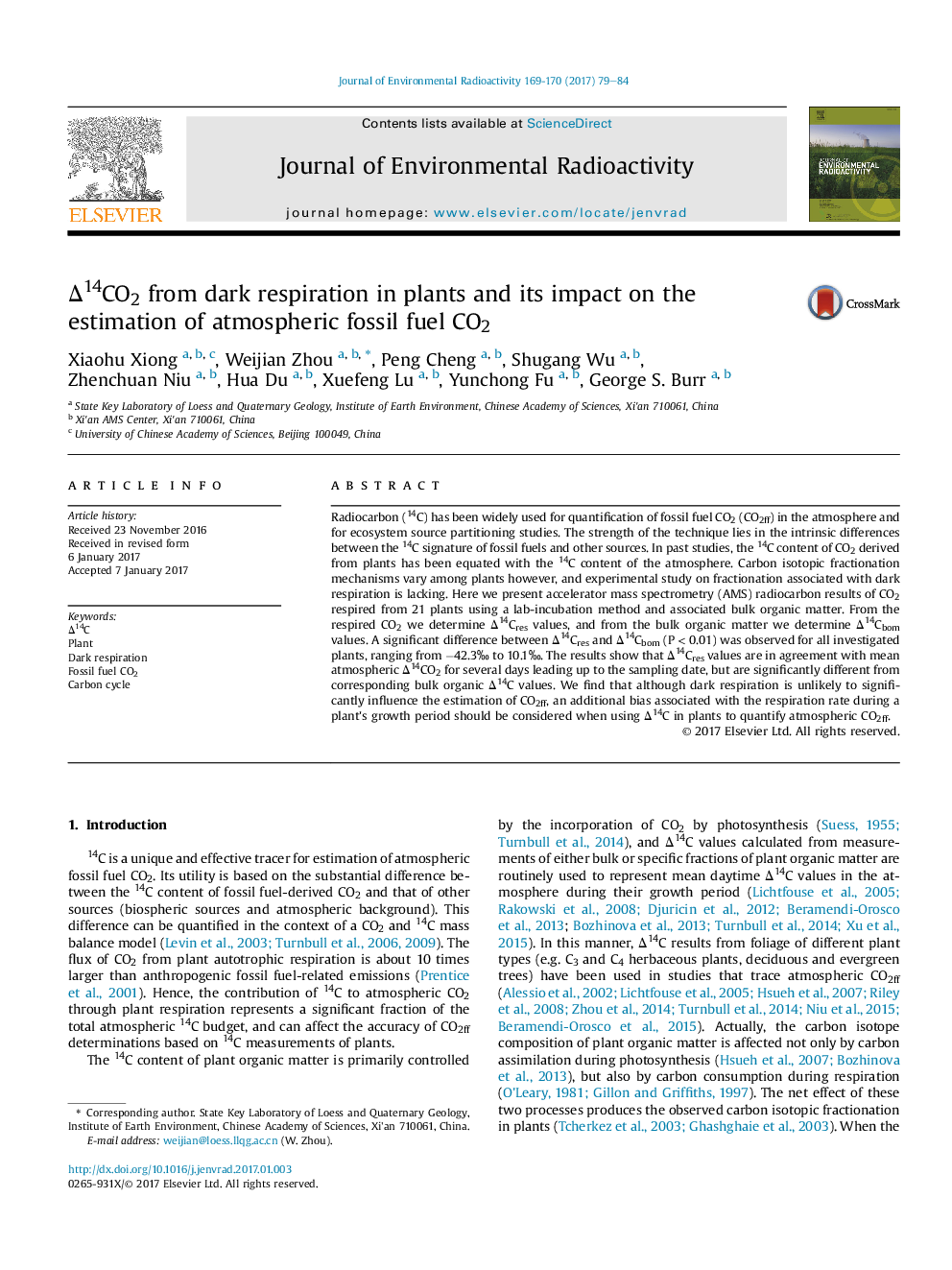| Article ID | Journal | Published Year | Pages | File Type |
|---|---|---|---|---|
| 5477715 | Journal of Environmental Radioactivity | 2017 | 6 Pages |
Abstract
Radiocarbon (14C) has been widely used for quantification of fossil fuel CO2 (CO2ff) in the atmosphere and for ecosystem source partitioning studies. The strength of the technique lies in the intrinsic differences between the 14C signature of fossil fuels and other sources. In past studies, the 14C content of CO2 derived from plants has been equated with the 14C content of the atmosphere. Carbon isotopic fractionation mechanisms vary among plants however, and experimental study on fractionation associated with dark respiration is lacking. Here we present accelerator mass spectrometry (AMS) radiocarbon results of CO2 respired from 21 plants using a lab-incubation method and associated bulk organic matter. From the respired CO2 we determine Î14Cres values, and from the bulk organic matter we determine Î14Cbom values. A significant difference between Î14Cres and Î14Cbom (P < 0.01) was observed for all investigated plants, ranging from â42.3â° to 10.1â°. The results show that Î14Cres values are in agreement with mean atmospheric Î14CO2 for several days leading up to the sampling date, but are significantly different from corresponding bulk organic Î14C values. We find that although dark respiration is unlikely to significantly influence the estimation of CO2ff, an additional bias associated with the respiration rate during a plant's growth period should be considered when using Î14C in plants to quantify atmospheric CO2ff.
Related Topics
Physical Sciences and Engineering
Energy
Nuclear Energy and Engineering
Authors
Xiaohu Xiong, Weijian Zhou, Peng Cheng, Shugang Wu, Zhenchuan Niu, Hua Du, Xuefeng Lu, Yunchong Fu, George S. Burr,
